ECMatrix™ Laminin Substrates are Superior Xeno-free Extracellular Matrix Coatings for Feeder-free Human Pluripotent Stem Cell Cultures
The stem-cell niche refers to the immediate microenvironment where stem cells physically interact with diverse ECM (extracellular matrix) proteins and signaling molecules to regulate cell fate. To create better in vitro models of the cellular environment, researchers have historically coated plasticware with distinct ECM proteins and adhesion molecules to facilitate binding by cellular integrin proteins. The basement membrane, which separates the epithelium from underlying tissue, is composed of about fifty kinds of ECM proteins including laminins, collagens, and assorted other glycoproteins. Laminins are heterotrimeric proteins composed of an α, β, and γ chain, and are among the largest basement membrane proteins, having a typical molecular weight of ~800 kDa. Laminin isoforms are referred to with three-digit numbers that represent their chain composition. For example, Laminin-511 refers to the isoform consisting of α5, β1, and γ1 chains.
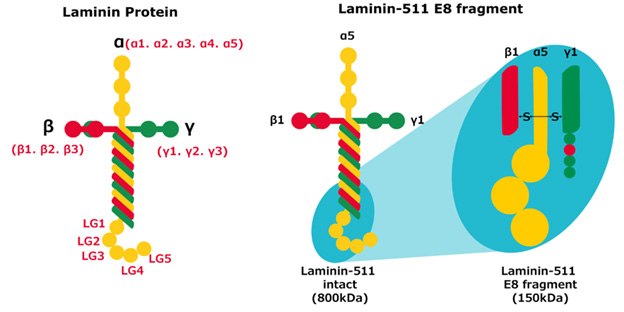
Figure 1.Structure of full length laminin protein, laminin-511 and laminin-511 E8 isoforms.
Human pluripotent stem cells (ES and iPS cells) express the major integrin species α6β1, and therefore can be maintained stably and expanded efficiently in feeder-free conditions on culture vessels coated with laminin-511, the binding partner of integrin α6β1 . However, laminin-511 is not suitable for large-scale production because of its large molecular weight and heterotrimeric nature. Professor Kiyotoshi Sekiguchi’s group (Matrixome, Inc.) have solved this problem by producing a recombinant E8 fragment of laminin-511 at large-scale that retains full integrin-binding activity. ECMatrix™-511 E8 Laminin Substrates can be used to culture pluripotent stem cells under feeder-free conditions with numerous advantages over traditional coating methods including:
- Animal-free, xeno-free formulation: Consistent from lot-to-lot, with no prescreening required
- No plate precoating required: Save time by simply adding to media while passaging cells
- Supports single-cell passaging without ROCKi: Ideal for CRISPR editing or clonal isolation
- Higher adhesion and growth rates: Achieve densities needed for experiments sooner
- Easy to handle: No chilling of cell culture consumables required
Additional laminin E8 fragments can also be used as substrates to differentiate human pluripotent stem cells into different lineages including endothelial progenitors (Laminin-411) and cardiomyocytes (Laminin-221).
Results
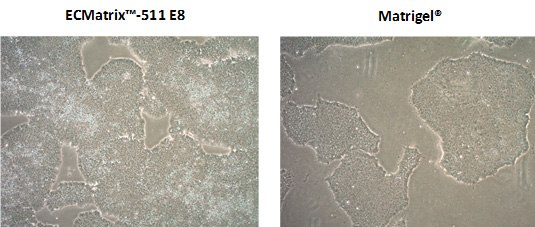
Figure 2.Growth of human induced pluripotent stem cells. Human iPSCs grown on ECMatrix™-511 E8 Laminin Substrates demonstrate higher cell proliferation rates compared to Matrigel® basement membrane extract when passaged as single cells using Accutase®.

Figure 3.Human iPSC pluripotency markers. Human iPSCs grown on ECMatrix™-511 E8 Laminin Substrates over 5 passages maintain pluripotency markers SSEA-4 (red, A), Oct-4 (green, B) and TRA-1-60 (red, C).
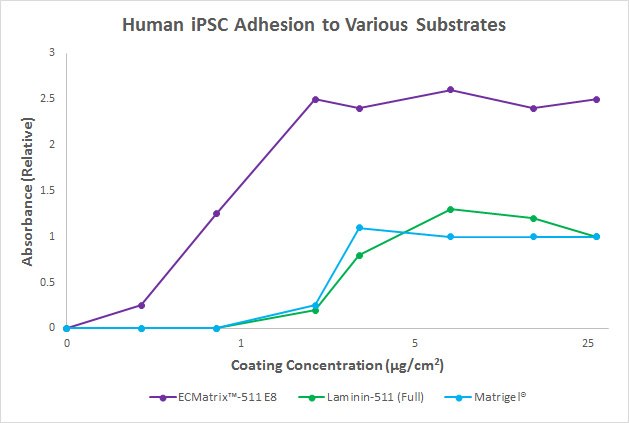
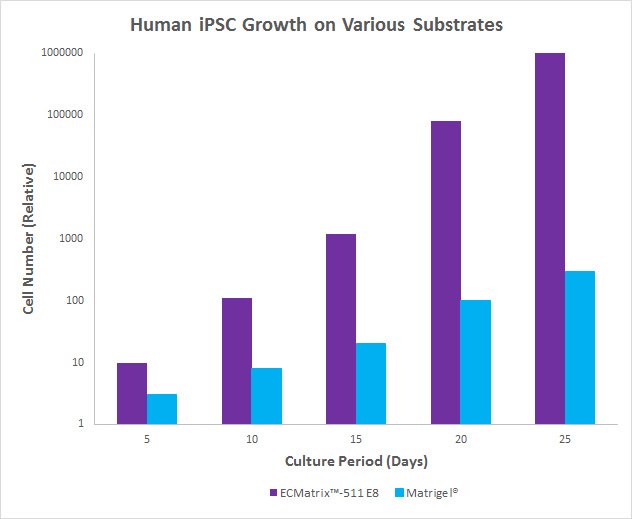
Figure 4. Adhesion and growth of human iPSCs on ECMatrix™-511 E8 Laminin Substrates vs. Matrigel®Adhesion and growth of human iPSCs on ECMatrix™-511 E8 Laminin Substrates vs. Matrigel®. A) Human iPS cells adhere more strongly to Laminin-511 E8 fragment than to the intact Laminin-511 or Matrigel®. OD570 absorbance represents the relative number of attached cells normalized against the values at the maximum effect on Matrigel®. Matrigel® control was arbitrarily set=1. B) Human iPS cells cultured using the Laminin-511 E8 Laminin Substrate resulted in 200-fold more cells when compared with Matrigel® coating methods.
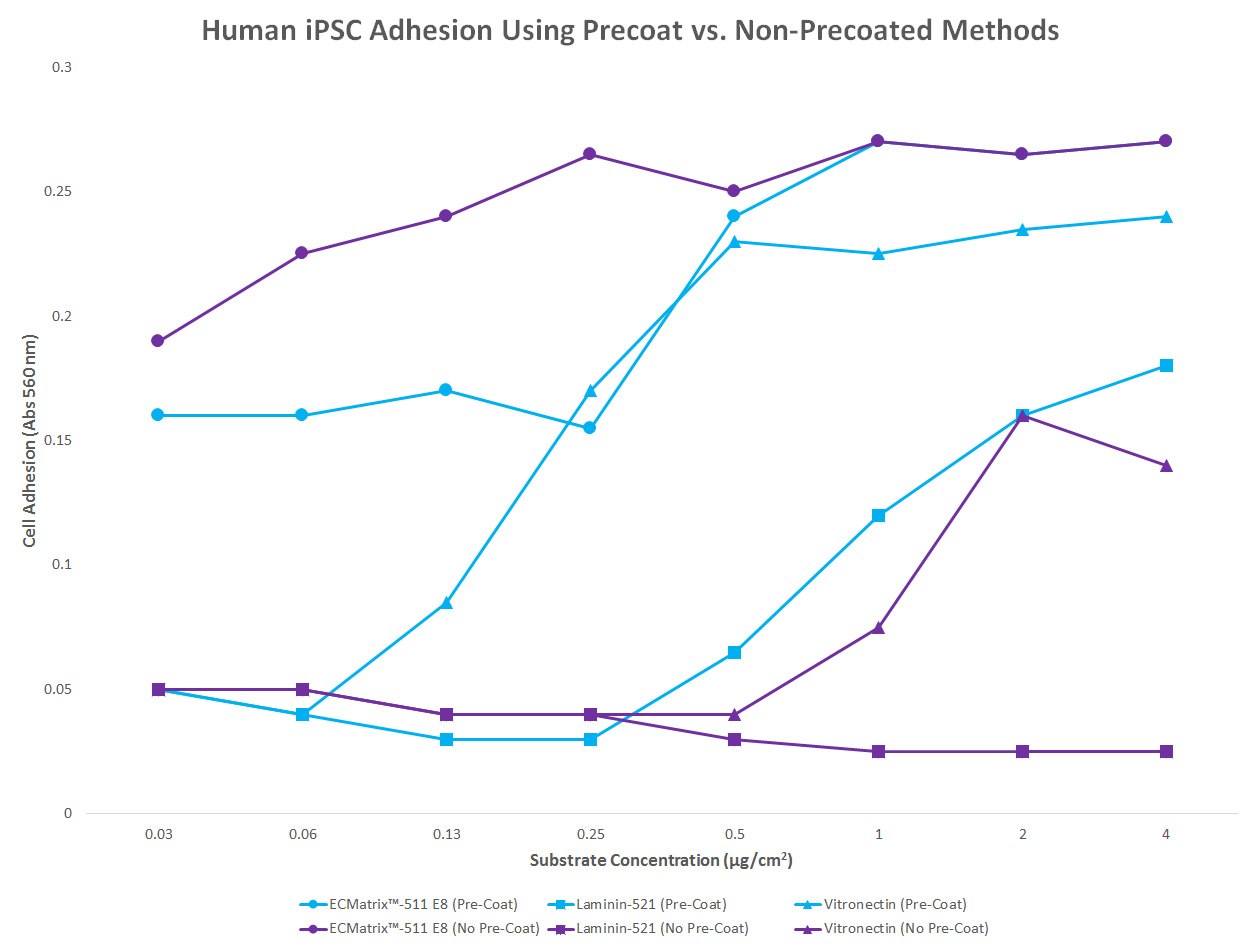
Figure 5. Cell adhesion of human iPSCs cultured on ECMatrix™-511 E8 Laminin Substrates vs. laminin-521 and vitronectin.ECMatrix™-511 E8 laminin supports adhesion and growth of human iPSCs using both precoated and non-precoated culture methods at low protein concentrations (<0.5 µg/cm2). Unlike other ECM substrates, such as full-length laminin-521 and vitronectin, ECMatrix™-511 E8 is simply added to cell suspensions that have been detached from cultureware during iPS cell passaging.
References
To continue reading please sign in or create an account.
Don't Have An Account?